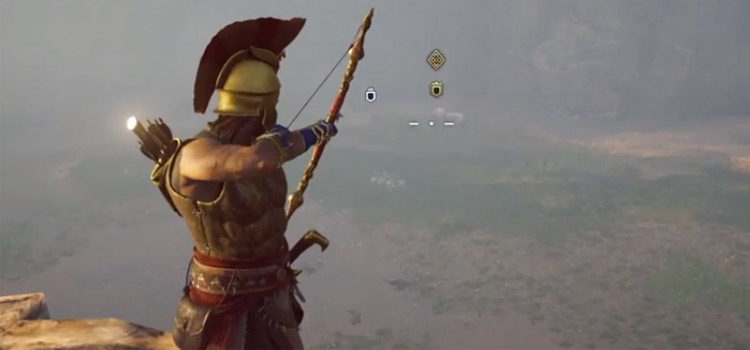Top 10 Best Martial Weapons in D&D 5E
This post may contain affiliate links. If you buy something we may get a small commission at no extra cost to you. (Learn more).
Martial characters are often the bread and butter of the party in Dungeons and Dragons.
Whether a new player or a seasoned veteran, martial characters (and by extension, martial weapons) are a great way to deal some mad damage to the baddies out in the wild.
Not all martial weapons are created equal, though. So we’re counting down the most notable martial weapons worth using in fifth edition.
10. Shortsword
Shortswords are a fantastic martial weapon.
At a glance they seem mid-tier at best, as they deal a measly 1d6 slashing damage. However, these bad boys can be dual wielded.
That’s 2d6 damage, baby!
They’re a light finesse weapon, which makes them a pretty viable pick for rogues, or anyone else that wants to dual wield. They’re basically the quintessential “rogue mad damage” weapon pick, so bare that in mind when creating your character!
9. Trident
Not only are tridents super dope from a flavor perspective, they’re really convenient too!
These three-pronged death instruments can be used both at close range and thrown, making them a flexible choice for your martial character.
Tridents deal 1d6 piercing damage when thrown at a range of 20/60, or 1d8 when used at close range.
That’s a pretty good deal, if I do say so myself.
8. Glaive
Glaives are a really cool weapon, and are technically considered a type of polearm. In 5e, Polearms are a group of weapons that have sharp blades attached to sticks, essentially.
Glaves have a rounded, curved blade, which gives the weapon great reach and deadly accuracy.
And in fifth edition, glaives deal 1d10 slashing damage – and are considered a heavy weapon with reach, and must be wielded with both hands. That could deal some pretty nasty damage if you roll well!
7. Heavy Crossbow
In fifth edition, there are two kinds of crossbows: heavy and handheld.
The heavy variety is better because it deals more damage, though there is the benefit of only having to use a single hand for the hand crossbow.
The heavy crossbow deals 1d10 damage, but there’s another hidden benefit – it’s all at range.
This keeps the character out of harm’s way while dealing some pretty hefty damage. You’ll have to keep an eye on ammo, but with a range of 100/400? It’s worth the extra headache.
6. Pike
Pikes are similar to glaives in that they’re also considered polearms.
Pikes rank higher than glaives just by virtue of the fact that they look soooo much cooler. And they have a long thin spike coming from the top of a wooden staff, with an axe just below the tip.
Honestly, they’re an intimidating looking weapon for sure.
In fifth edition, pikes deal 1d10 piercing damage. And just like glaives, they’re heavy, require two hands, and have reach.
They’re a fantastic pick for tanky characters like paladins or fighters for these reasons.
5. Halberd
Halberds are yet another variety of polearm included in fifth edition.
Although halberds differ from glaives and pikes by appearance, as they look like pikes in that they have the axe head, but there’s no tip at the top.
Like the other two polearms on this list, halberds deal 1d10 damage. However, they deal slashing damage.
Some undead resist piercing damage, so halberds rank higher just by virtue of them being something different. With campaigns like Curse of Strahd being so popular, any weapon that can clear the scourge of undead from the world is a benefit!
4. Net
Here’s a curveball – nets.
Nets are one of the most useful weapons in fifth edition, even if they don’t deal any damage themselves.
A successfully-thrown net is one of the most useful support actions a party member can take.
By throwing a net, an enemy is restrained. When restrained:
- A character’s speed is reduced to zero
- Attackers have advantage
- And the restrained character’s attacks have disadvantage
That all makes it so much easier for other party members to attack! Support items are valid, man.
3. Lance
Lances are also, unsurprisingly, considered polearms. But they’re a more mainstream version, especially for fighters.
Lances are fantastic in that they can be thrown, and are considered a special weapon.
Design-wise, lances are tall staffs with a pointed tip, sometimes with other sharp bits protruding from the pointy end.
And in D&D these deal 1d12 damage per hit, and have great reach. They also deal piercing damage, and weigh only 6lbs.
2. Greataxe
Greataxes are enormous heavy weapons that do some mad damage.
They’re often really quite heavy, so only characters with good strength typically wield them, such as barbarians, paladins, or fighters.
But greataxes are one of the heftiest weapons in the game, dealing 1d12 slashing damage, which makes them ideal for fighting the undead. Especially if your DM will let you stick an enchantment on there – you can do some pretty thick damage with a greataxe.
1. Greatswords
Greatswords are, hands down, one of the single best weapons in fifth edition Dungeons & Dragons.
Essentially being just huge freaking big swords, greatswords are wielded in two hands.
They also deal 2d6 damage, which makes the minimum roll one of the best.
Even if you roll poorly, you’re guaranteed two damage points, plus whatever modifiers you have. That’s way better than the standard weapon.






